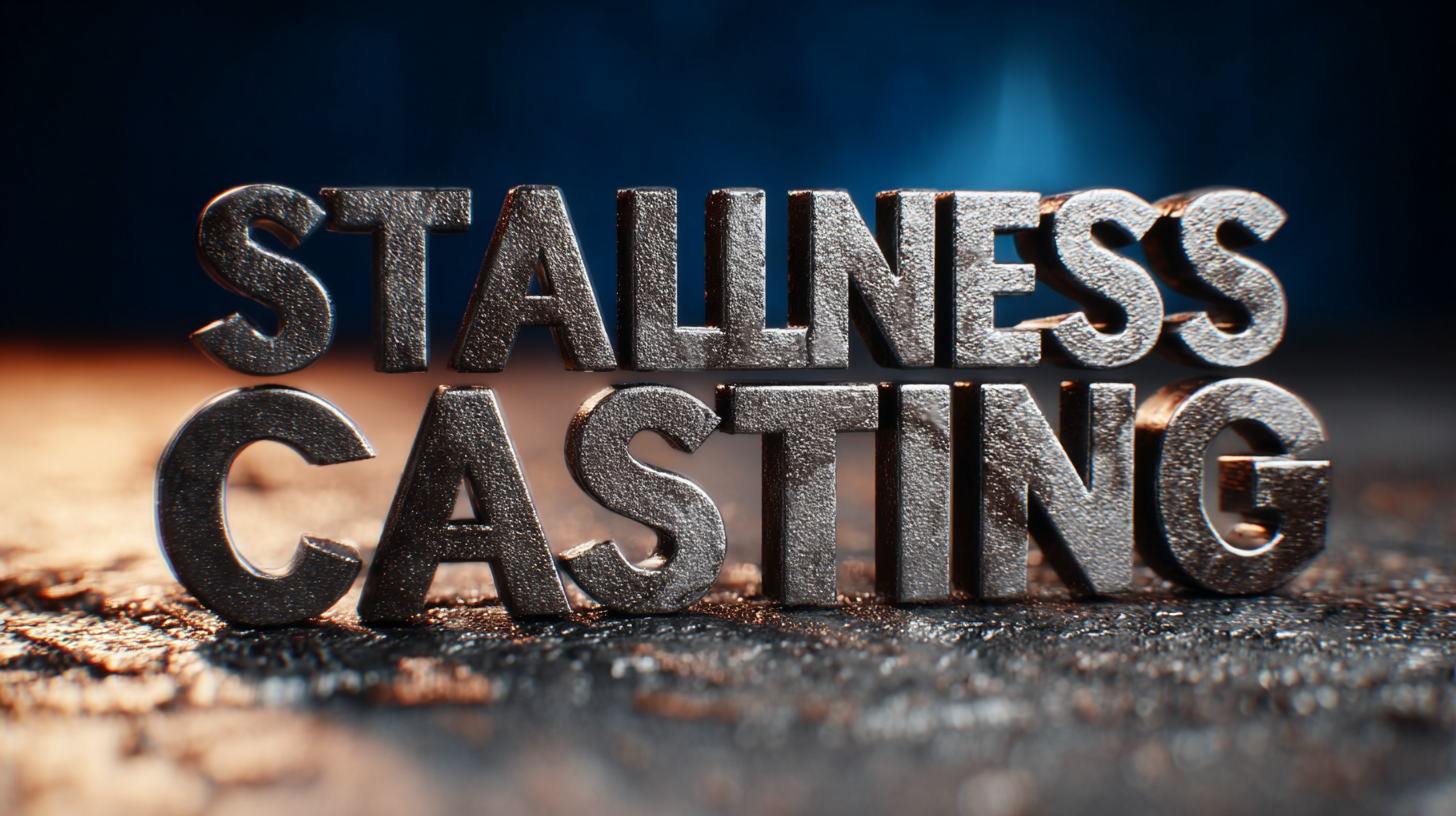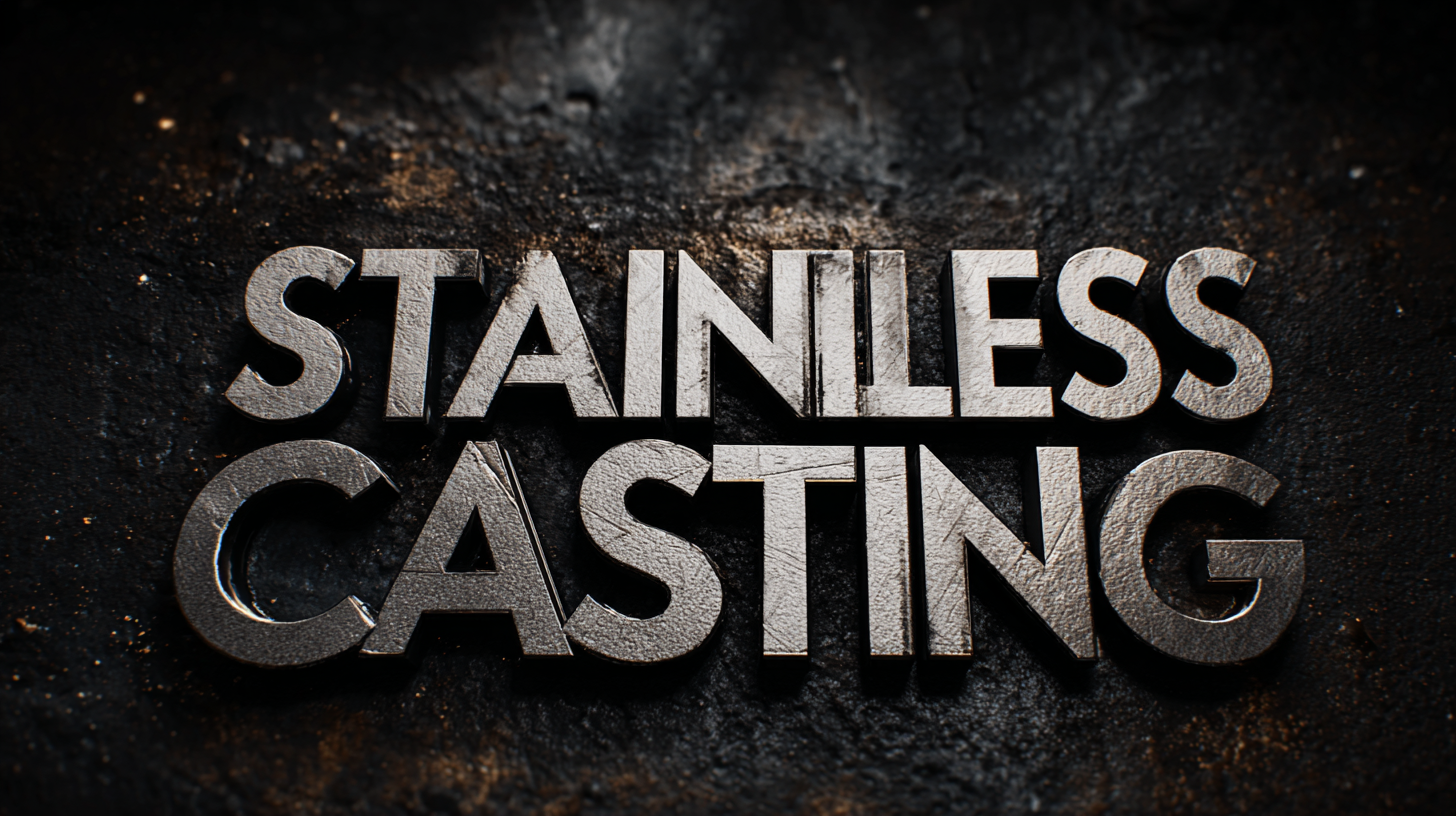In the rapidly evolving landscape of manufacturing and production, Stainless Steel Casting has emerged as a pivotal choice for global buyers seeking durability, corrosion resistance, and precision. According to the "Global Stainless Steel Market Report" published by Markets and Markets, the stainless steel industry is projected to reach a valuation of USD 255 billion by 2025, driven by increased demand across various sectors, particularly automotive and construction. The inherent properties of stainless steel, such as its ability to withstand extreme temperatures and harsh environments, make it an unparalleled choice for casting applications. Furthermore, the International Casting Federation highlights that advancements in casting technologies have significantly improved the quality and efficiency of stainless steel products, thus catering to the stringent requirements of modern industries. As global buyers continue to prioritize sustainability and long-term performance, understanding the technical specifications and casting processes becomes essential in making informed decisions about stainless steel casting products.

The quality of stainless steel castings is influenced by several critical factors that affect their overall integrity and performance. One key aspect is the machined surface integrity, especially during the turning of hardened steels. High levels of heat generation and friction during machining can compromise surface quality, leading to defects that affect visual inspection outcomes. Studies have shown that surface imperfections can significantly deteriorate the mechanical properties of the material, highlighting the importance of precise machining conditions to mitigate such risks.
Moreover, understanding the environmental factors affecting the casting process is essential. Research indicates that variations in casting position can lead to cracking behavior in concrete elements, which parallels how positioning can influence defect formation in stainless steel castings.
As delineated in recent analyses, the evaluation of these defects can be enhanced through advanced non-destructive testing methods, providing insights into the adhesion strength and structural integrity of components. Such comprehensive analyses are vital for global buyers seeking reliable stainless steel castings that meet stringent quality standards.
The global demand for stainless steel castings is projected to grow significantly, driven by various industrial applications and a rise in infrastructure development. As buyers look for high-quality materials, understanding key market statistics and trends becomes crucial. For instance, the price forecast for stainless steel in 2025 highlights the potential influence of fluctuating raw material costs, such as those for chromite, which is expected to see substantial growth from USD 20.64 billion in 2025 to USD 27.56 billion by 2033.
Tips for buyers include closely monitoring market trends and fluctuations in raw material prices. Staying informed about the ferrosilicon and aluminum markets can also provide valuable insights, as these materials often play a pivotal role in the production of stainless steel. With advancements expected in the global ferrosilicon market, anticipated to reach USD 13.7 billion by 2030, buyers should consider how these developments might affect their procurement strategies.
Additionally, as the demand for specific grades of stainless steel evolves, it is essential for buyers to engage with suppliers about the latest technological advancements in casting processes. This engagement ensures they are not only getting competitive pricing but also high-quality products that meet industry standards and specifications.
When searching for high-quality stainless steel casting suppliers, it is essential to adopt strategies that prioritize both sustainability and product excellence. One key approach is to evaluate the supplier's commitment to sustainable practices, particularly regarding their material sourcing and production methods. With heightened public awareness around environmental impacts, companies must not only comply with regulations but also align their operations with eco-friendly principles. Look for suppliers who can demonstrate an integrated approach to sustainability throughout the entire life cycle of their products, ensuring that every stage—from raw materials to delivery—minimizes environmental harm.
Another crucial strategy is to engage with suppliers who prioritize transparency in their processes. Quality stainless steel casting is often linked to meticulous quality control and adherence to national and international standards. A supplier’s willingness to undergo audits and participate in public discussions, such as those related to steel imports and national security, can signify their reliability and commitment to maintaining high-quality production practices. Buyers should conduct thorough research and seek references to gauge a supplier's reputation and the performance of their castings, thereby ensuring that they make informed decisions that benefit both their operational needs and the broader community.
When evaluating suppliers for stainless steel casting, certifications and quality assurance practices are crucial elements that determine their capability to meet global standards. Key certifications, such as ISO 9001, help buyers assess a supplier's commitment to quality management systems. This certification ensures that the suppliers consistently meet customer requirements and enhance satisfaction, serving as a benchmark for operational excellence.
Furthermore, adopting robust quality assurance practices, such as continuous monitoring and inspection throughout the casting process, is vital. Suppliers who implement measures like statistical process control (SPC) and employ experienced quality assurance personnel significantly reduce defects and improve product reliability. Engaging with suppliers that prioritize these practices not only assures superior casting products but also builds long-term partnerships based on trust and accountability, essential for competitiveness in the global market.

Technological advancements have played a pivotal role in enhancing the quality of stainless steel casting, making it an ultimate choice for global buyers. According to a recent report by Research and Markets, the global stainless steel market is projected to reach $140 billion by 2025, driven largely by innovations in casting techniques. Modern methods such as investment casting and 3D printing have significantly reduced waste and improved the precision of complex geometries, leading to higher quality products.
Moreover, the implementation of advanced materials and computer-aided design (CAD) software has revolutionized the process. A study published in the Journal of Materials Science found that using sophisticated simulation tools can predict casting defects with up to 90% accuracy, enabling manufacturers to streamline their production processes and minimize rework. Additionally, advancements in alloy compositions have allowed manufacturers to create stainless steel options that exhibit superior corrosion resistance, essential for industries like automotive and aerospace. As the sector continues to evolve, these technological improvements are setting new standards for stainless steel casting quality.





